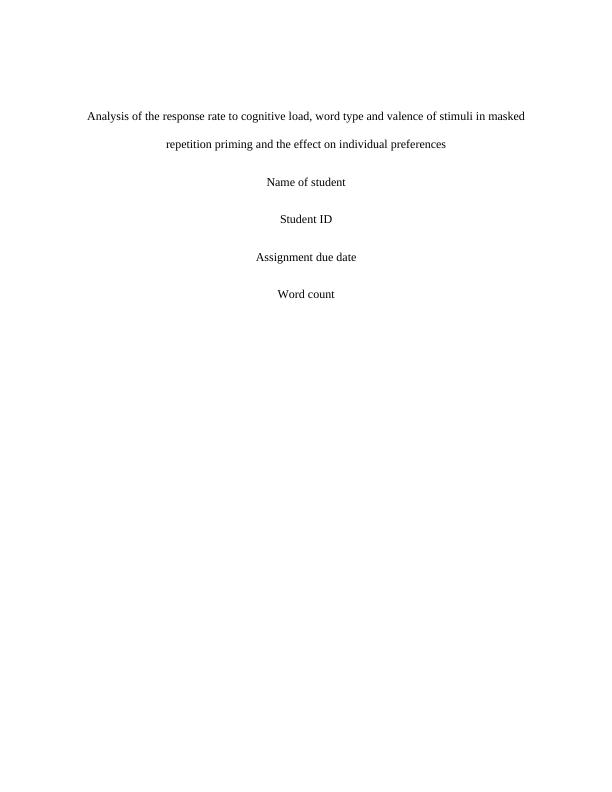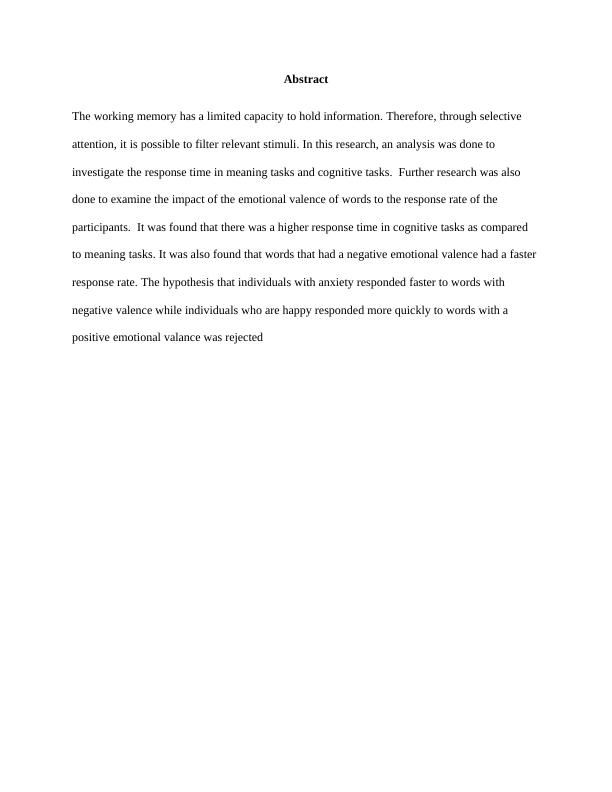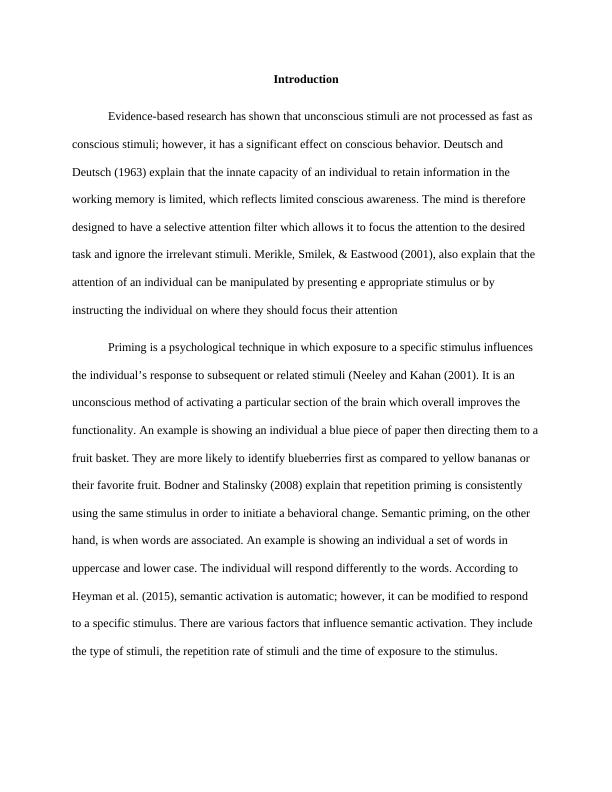Analysis of the response rate to cognitive load
Added on 2022-08-29
10 Pages2254 Words22 Views
End of preview
Want to access all the pages? Upload your documents or become a member.
Happiness and Priming Effects for Positive Words
|15
|3855
|22
Semantic Priming: Influence of Emotional Valence Words on Cognitive Processing
|13
|3666
|27
Various Cognitive Development Assignment
|14
|3710
|15
Cognitive Psychology: Understanding Mental Processes and Stimuli
|8
|1823
|26
Emotional Valence Words on a Level of Masked Repetitive Priming and its Effect
|15
|4023
|18
A Lab Report from a Cognitive Approach 2022
|11
|3172
|8



